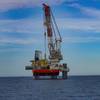VIDEO: U.S. Offshore Wind Opportunities Abound for Both Local and Foreign Firms
The U.S. government has recently announced plans to promote offshore wind, with a goal to have 30 gigawatts (GW) of offshore wind capacity installed by 2030, and a whopping 110GW of offshore wind by 2050.
It has also committed to supporting the development of a sustainable local offshore wind supply chain, which is set to benefit from $136 billion expected to be spent on U.S. offshore wind development in the U.S. within this decade, as estimated by World Energy Reports. Still, it will take some time to build the local supply capacity, meaning foreign firms will benefit from the U.S. offshore wind drive, and for the foreseeable future, too.
Offshore Engineer sister-company Maritime Reporter TV spoke this week Philip Lewis, World Energy Report's Director of Research, to learn more about what these large GW targets really mean, and how they translate into business opportunities for the local companies.
Lewis said: "At one level you can argue that the 30GW target is only really formalizing what the Northeast and Mid-Atlantic states have been doing as they have been driving offshore wind development through their general renewable energy targets, specific offshore wind goals, and procurements.
"Northeast and Mid-Atlantic states offshore wind goals amount to a cumulative 34GW by 2030-2035. Over 14GW of this target has already been procured by states from offshore wind projects. Another 8.5GW of capacity is planned to be tied up in planned offtakes in the short- to mid-term."
Putting the 30GW target in context, Lewis said that total global offshore wind installed capacity was roughly 32GW at the end of 2020.
"The first European offshore wind farm was commissioned in 1991. The first large-scale wind farms appeared in the 2000’s. Industrialization of the sector accelerated in the last decade. The US market will benefit from the industrialization of the wind sector as there is now a project development pipeline of over 40GW," Lewis adds.
While the 30GW target may have only a formalization of the projects already in the pipeline, Lewis he noted the government's efforts at improving its leasing procedures and said that WER's expected a much higher level of activity in the U.S offshore wind space than was anticipated six months ago.
Growing number of projects under review
"Since April of this year the White House has set a national development target of 30GW of offshore wind by 2030 and 110GW by 2050, a major project in federal waters has been approved for construction (Vineyard 1), six projects in federal waters are under final review by BOEM, 2.6GW of project capacity has secured New York state procurements and 11.6GW of new federal leasing activity in the northeast and California is underway," Lewis said.
"BOEM has increased the number of projects under permitting review from one to six – and we expect more projects to join the review process in the short-term. BOEM has also advanced the leasing process for 7GW of new East Coast Leases and over 4.5GW of West Coast leases. And finally, BOEM is taking the first steps to initiate Gulf of Mexico leasing,"
Per Lewis, final investment decisions are expected for 19 projects over the next 18 months.
"Most of the projects will be larger wind farms in the federal waters of the northeast and Mid-Atlantic. The forecast also includes a demonstration project in the Great Lakes and four floating wind demonstration projects – two each in the Atlantic and the Pacific," he said.
U.S. offshore wind spend to exceed $136B. Huge opportunity for suppliers
At least 40 offshore wind projects are forecast to be developed within this decade. CAPEX spend will exceed $136 billion. Once the projects are delivered, annual recurring OPEX will amount to more than $4 billion, per Lewis.
"At the end of life, decommissioning activities represent a spend of over $18 billion, Lewis said, adding that these opportunities would benefit ports, fabricators, component manufacturers, vessel operators, engineering firms and lenders.
"The White House statement highlighted the support for building domestic supply chain capability – a very common theme in offshore wind development. Multiple federal agencies will be involved in managing loans and financial support to the domestic supply chain," he said.
Local supply chain yet to be built. Foreign firms to fill the gap
Lewis, the author of the recently released “International Wind Turbine & Foundation Vessel Installation Vessel Market Forecast” shared his views on the local wind turbine installation vessel market, which currently doesn't exist, but the plans are there to build it. As a matter of fact, one vessel, Dominion's Charybdis is currently being built by Keppel at its yard in Brownsville, Texas.
"A key aim of the White House is to anchor one or two US factories for each major wind farm component. This is unlikely to benefit the first wind farms to be built – these will rely mostly on components manufactured in Europe and transported to the United States. This will change over time, with commitments having been announced for some key component factories," he said.
He said there was a target of four to six U.S.-owned specialized turbine installation vessels (WTIVs), which will help ease a potential supply shortage of installation vessels in the US. However, these will not come cheap, as the Jones Act calls for these vessels to be built in the U.S.
"The high CAPEX -close to 40% higher than South Korean & Chinese yards - will add to project costs. It is likely that the installation of US wind farms will be carried out by a mix of Jones Act compliant and foreign-flag vessels in the foreseeable future," Lewis said.
For example, the U.S. offshore wind developer Vineyard Wind has recently contracted Belgium-based DEME for the offshore transport and installation of the wind turbine generators for its Vineyard Wind 1 project, which will be the first large-scale offshore wind installation in the United States.
Located 15 miles off the coast of Martha’s Vineyard, Vineyard Wind 1 will have a generating capacity of 800 megawatts (MW), capable of providing electricity to power more than 400,000 homes.














